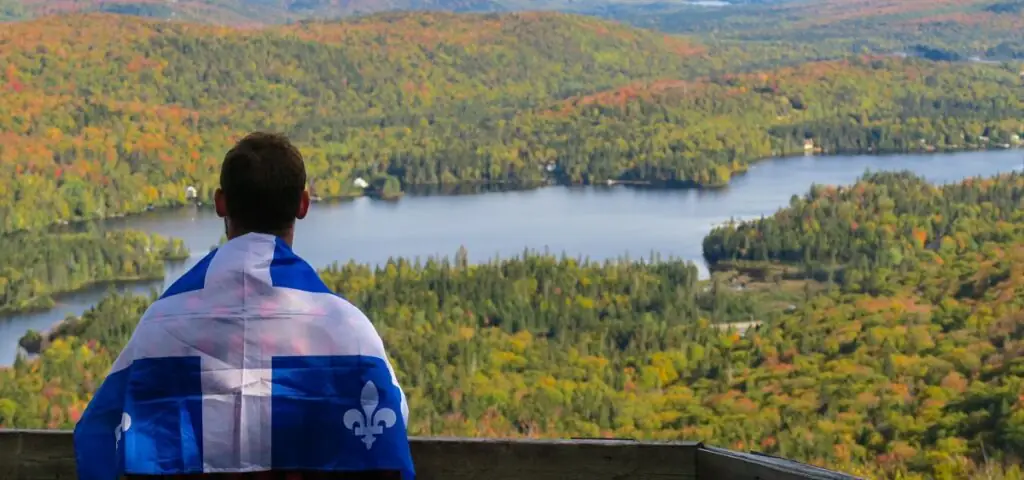From civil unions for same-sex couples to childcare centres, several laws and programs adopted in Quebec have paved the way for broader change across Canada. Here are six important reforms from Quebec that inspired changes in other parts of the country.

1. Early childhood centres
1997: Quebec creates early childhood centres (Centre de la petite enfance or CPE in French) in order to offer low-cost, educational daycare for children ages 0 to 5. One of the main goals? To increase women’s participation in the workforce. At the time, Quebec had one of the lowest employment rates in Canada for mothers with children ages 3 to 5. In 1998, 67% of these mothers were working. By 2014, that number had grown to 82%, putting Quebec in second place across Canada. During this time period, the Canadian average went from 71% to 77%.
In 2021, the federal government announced a plan to create a national childcare system that would cost parents $10 a day. So far, seven out of thirteen provinces and territories have reached that goal, offering childcare that averages $10 a day. In Quebec, the average cost is slightly lower.
2. Public prescription drug insurance plan
1997: Quebec introduces a public prescription drug insurance plan—the first of its kind in Canada. Since then, it’s mandatory for anyone without private coverage to join the public plan. People have to pay an annual premium based on their income. However, some people like children and some students under the age of 25 don’t have to pay a premium.
A law to create a similar program across Canada was passed in October 2024. At least four provinces or territories have announced when they plan to start the program, some beginning this year, others in 2026.
3. The Paix des Braves Agreement
2002: Signed by Bernard Landry, Quebec’s Premier, and Ted Moses, Grand Chief of the Cree Grand Council, the Paix des Braves Agreement was a first in Canada, and even worldwide. Considered as a historic agreement, it created the first-ever “nation-to-nation” partnership between a government and a First Nation. The agreement gave the Cree more control over their economic and community development and created a new system to reconcile forestry activities with their traditional way of life.
In 2008, the Canadian government reached a similar agreement with the Cree Nation of Eeyou Istchee, inspired by the Paix des Braves Agreement.
4. Civil unions for same-sex couples
2002: Just three weeks after passing the law that created civil unions, the first same-sex civil union was celebrated at the Montreal courthouse. This wasn’t just a first for Quebec, but for all of North America. Since marriage is a federal responsibility, the Quebec government created civil unions to grant same-sex couples nearly the same rights and responsibilities as those that come with marriage.
It wasn’t until 2005 that Canada legalized marriage between same-sex partners. The reform deeply divided the Canadian Parliament until the last moment. A total of 32 Liberal Members of Parliament (MP) and the majority of Conservative MPs opposed the bill.
5. The carbon market
2013: Although British Columbia was the first Canadian province to introduce its own carbon pricing system in 2008, Quebec set a North American precedent in 2014 by joining its carbon market with California’s. This system puts a price on carbon to help regulate greenhouse gas (GHG) emissions and contribute to climate action.
Last April 1st, the Legislative Assembly of British Columbia decided to eliminate the carbon tax for consumers in the province, making Quebec the only province to maintain its own carbon pricing system. That same day, the federal government also ended its carbon pricing policy, a measure introduced in 2019 by Justin Trudeau’s government to encourage Canadians to adopt cleaner energy sources.
6. Medical aid in dying
2014: Adopted by Quebec, the Act respecting end-of-life care raised concerns at the federal level. The question reached the Supreme Court because medical aid in dying was still banned by the Criminal Code at the time. In its decision, the Court found that this ban violated several fundamental rights, including the rights to life, liberty, and security of the person.
A federal law on medical aid in dying was eventually passed in 2016, allowing access for people whose death was reasonably foreseeable. More recently, Quebec introduced the option of advance requests for medical aid in dying, but this change has not yet been analyzed by the federal government.





